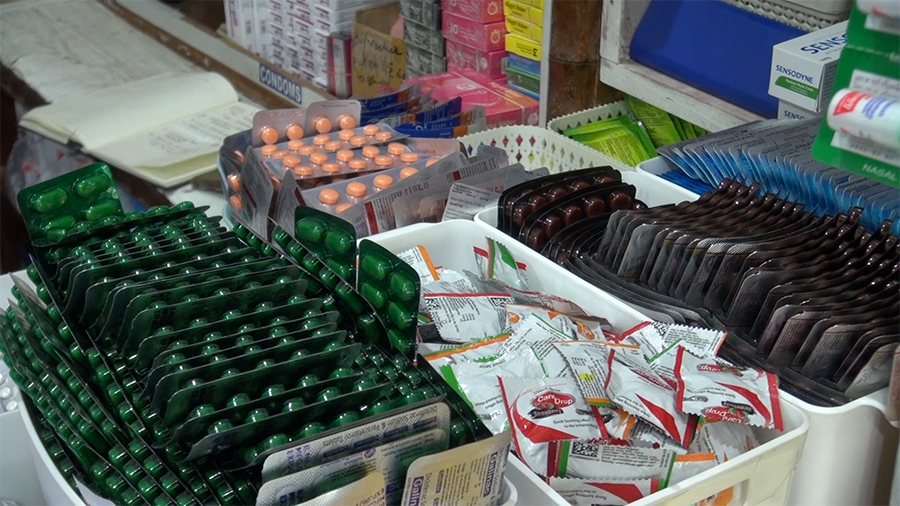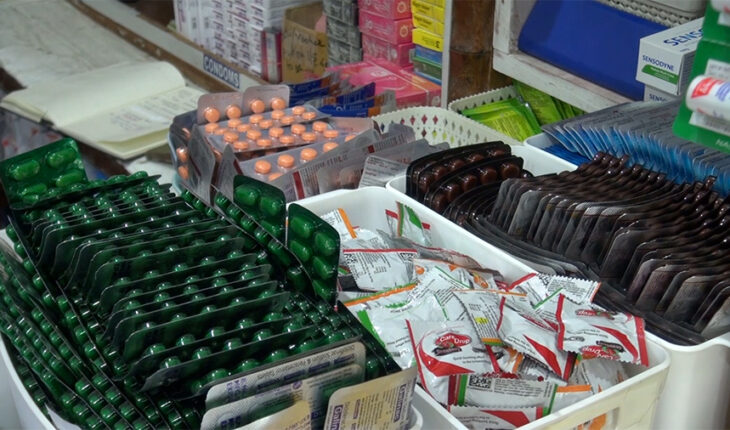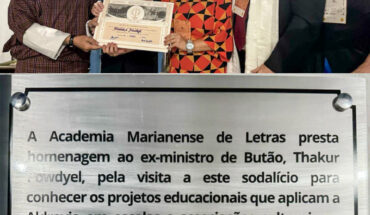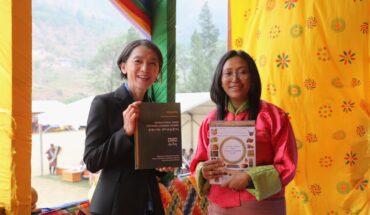
Rural Bhutan left struggling as private pharmacies cluster in cities
TIL BDR GHALLEY
Thimphu
Despite Bhutan’s commitment to universal healthcare through its publicly funded system, a recent study has revealed significant disparities in access to private pharmacies, particularly in remote Dzongkhags.
The report, authored by Tshewang Choden, Senior Planning Officer with the Consumer Empowerment and Economics Division, cites structural constraints, regulatory hurdles, and workforce shortages as key barriers to equitable private sector growth in pharmacy services.
“Private pharmacies play a crucial complementary role in improving access to over-the-counter and essential medicines,” said Choden. “However, their presence is heavily concentrated in urban areas like Thimphu, leaving rural communities underserved.”
According to the Bhutan Food and Drug Authority (BFDA), the country currently has 83 registered retail pharmacies and 35 wholesale pharmacies.
While these outlets offer convenience, choice, and extended service hours beyond public health centers, their absence in Dzongkhags such as Zhemgang, Gasa, and Samdrup Jongkhar has forced residents to seek medication from across the border raising concerns about safety and compliance with Bhutanese standards.
The study, which employed a mixed-methods approach, gathered data from 10 wholesalers, 20 retail pharmacies, and 70 consumers across seven Dzongkhags with either only one or no pharmacy. It aimed to evaluate pricing structures, operational challenges, and consumer experiences.
Findings revealed that nearly half of all retail pharmacies are concentrated in Thimphu. Four Dzongkhags have only one pharmacy each, while six have none.
In such regions, residents primarily rely on Basic Health Units (BHUs) and hospitals. When these facilities run out of stock, consumers are left to travel long distances or turn to unregulated sources.
“Consumers in underserved regions are compelled to seek medicines from unregulated sources, which raises safety concerns,” Choden emphasized.
The report found that 75 percent of retail pharmacies cited high transportation costs as their biggest challenge. Recruiting Certified Pharmacists (CPs) remains a critical bottleneck, reported by 55 percent of retailers and 30 percent of wholesalers.
While Bhutan has approximately 162 certified CPs, many are reluctant to join or remain in private and rural practices.
“About 69 percent of retailers interested in expansion identified CP shortages as their primary constraint,” the study noted.
Other significant barriers included low local demand (46%), high rental costs (23%), and limited access to finance (15%).
Wholesalers echoed similar concerns, with 80 percent citing transportation expenses and 70 percent reporting insufficient market demand as barriers to expanding operations.
Despite these challenges, price regulation was widely accepted. Under Bhutan’s Medicines Act of 2003, all health-related products must be sold at or below approved prices, with capped margins for manufacturers, wholesalers, and retailers.
Eighty percent of wholesalers and 85 percent of retailers expressed satisfaction with this system.
“Most respondents accepted the regulated margins,” the report stated. “Though a minority advocated for deregulation to increase profits, none found the current system financially unviable.”
Consumer feedback reflected the consequences of uneven pharmacy distribution. In Dzongkhags with only one pharmacy, 28 percent of respondents raised concerns over monopolistic pricing and frequent stock shortages.
While 55 percent were satisfied with services, 80 percent called for more pharmacy outlets to improve access and affordability.
In Dzongkhags without any pharmacies, 100 percent of respondents strongly expressed the need for private outlets. The study found that in such areas, residents often delay treatment or obtain medicines from unofficial cross-border vendors.
To address the rural-urban imbalance, the report outlined several actionable recommendations aimed at encouraging private sector participation.
One major proposal was to provide low-interest loans and tax holidays for pharmacy investors under programs like the Economic Stimulus Plan (ESP).
The report also suggested that the Ministry of Health offer small grants to CPs willing to establish outlets in underserved regions.
Dzongkhag Administrations were urged to repurpose underutilized government buildings as pharmacy spaces—particularly in districts like Trongsa and Samdrup Jongkhar—where commercial property remains unaffordable.
“Providing subsidized rental spaces would ease cost pressures and incentivize pharmacy expansion,” the report stated.
To alleviate the CP shortage, the report proposed a public-private sponsorship model where pharmacy firms support aspiring CPs in obtaining their certification at subsidized rates.
Simultaneously, the Khesar Gyalpo University of Medical Sciences of Bhutan (KGUMSB) was encouraged to expand its intake capacity.
In the short term, the Ministry of Health and Department of Labour could authorize the temporary employment of qualified expatriate pharmacists in critical locations.
To overcome geographic limitations, the report recommended piloting e-pharmacy services, allowing licensed urban pharmacies to deliver medicines to rural consumers through digital platforms under BFDA oversight.
“Countries such as India and Kenya have established successful models that Bhutan can benchmark,” the report noted.
In addition, the study encouraged the exploration of drone-based pharmaceutical delivery to reach remote communities.
“Several African countries have demonstrated the effectiveness of drone technology in healthcare logistics,” Choden said. Bhutan, the report suggested, could assess these examples to develop its own systems for difficult terrain.
While Bhutan’s public health system remains committed to equity, the limited expansion of private pharmacies has left rural areas exposed to service gaps.
Despite widespread support for price controls, operational inefficiencies and a shortage of qualified pharmacists continue to stall progress.
The report concluded that strategic collaboration is essential. “A coordinated strategy involving public oversight and private investment is crucial,” it stated. “Innovative solutions such as e-pharmacies, workforce sponsorships, and infrastructure support will be key to bridging the pharmacy access divide.”





